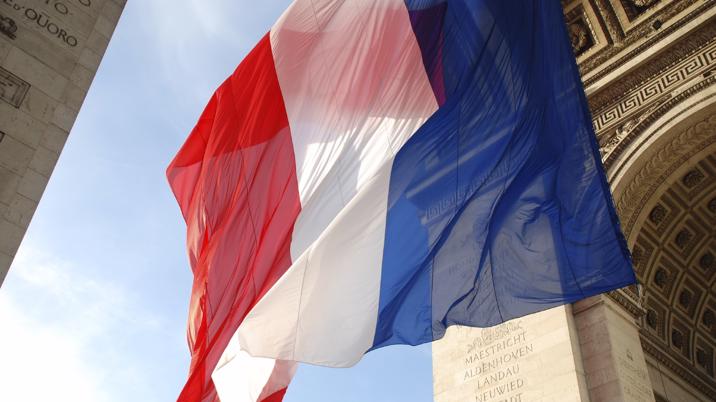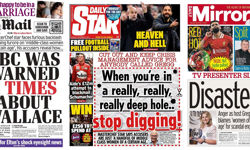
Stop at 1820 Market Street, St Louis, and buy a copy of Missouri’s finest, the Post-Dispatch. Stroll down the Boulevard Saint-Germain and pick up Le Monde at a newsstand near the Sorbonne. Or pause in Piccadilly for the Times, the Guardian, the Mail, the Daily-Whatever-You-Fancy. They’re all newspapers, aren’t they? With front pages, editorials, cartoons, TV schedules… the same stuff wherever you find it, right round the globe. Except, of course, that there also many real differences, cavernous and crucial.
Surely Le Monde should be giving us the latest on Francois Hollande’s love life? Surely the Post-Dispatch’s political horizon must stretch further than Jefferson City? If you want to understand their attitudes to journalism, their often wholly separate ways of viewing the world, then you need to delve much deeper. For, in important ways, the modern lessons from targeted news on custom-built websites roll back time.
Media history didn’t end 25 years ago when Tim Berners-Lee invented the net. On the contrary, it links yesterday, today and tomorrow.
America - in inexorable ways - saw the whole nature of its journalism change.
How US papers evolved
Consider one of the great legends of American publishing, Joseph Pulitzer, father of the eponymous prizes. He’s history, to be sure: died 1911. Since when did working journalists worry about such things?
It’s the next edition, the next blog, the next deadline that absorbs them most. But wander back to the St Louis of the 1870s, when Pulitzer brought the Post and the Dispatch together to make his iconic Post-Dispatch: a vibrant challenger to the city’s Star-Times, the Globe-Democrat, the Daily Times, the Chronicle and the Republican News (not to mention a cluster of titles for German, Polish, Jewish and other immigrants). In his first year, the merged paper’s circulation grew from 2,000 a day to 5,000; and it coined a profit of $80,000 dollars.
That tells you some very simple things about the good old days of American newspapers. Anybody could buy a press and set up as publisher.
Anybody who carved out a niche that advertisers wanted could make good money. Nobody, in such a thrusting environment, succeeded by covering the same routine things in the same routine way. You had to compete.
You needed the sharpest of elbows. But see where such competition led…
The weaker sisters rolled over and died. Costs - and union restrictions - increased exponentially. Radio and TV wrought their havoc. Chains merged. And then, in Pulitzer’s home town, there was only one paper left. A sickly Post-Dispatch, hanging on and (absolutely typically) fighting to survive in standard, consensual ways: by seeing who, in its catchment area, might possibly still buy a newspaper, and then putting something in print to meet their needs.
So America - in inexorable ways - saw the whole nature of its journalism change. Newspapers became more compiled than edited, a smorgasbord not a steak sandwich. And the interests of the circulation area naturally dominated: in Washington, bring on loads of politics (for the politicians), loads of foreign news (for the embassy crowd), loads of Metro section crimes, pages of cartoons, pages of sport, pages of DC cocktail parties (for wives left at home in Maryland who weren’t invited). This, after a fashion, was - and remains - journalism by numbers. It is what domination of your city and its suburbs dictates.
UK national papers are not, and cannot be, consensus products. History insists that they must be different.
The competitive UK scene
But Britain’s national press, at least, has never gone that way. We are still stuck in a much bigger version of early American newspaper life. The Times, the Guardian and the Telegraph from the nineteenth century are still with us. The Mails and the Mirrors that Alfred Harmsworth started haven’t stopped yet. Think of the United Kingdom as one huge urban conurbation, bound together over a hundred years by a transport system and a geography that allows you to print papers in one or two centres and distribute them nationwide in time for breakfast. We have ten dailies today, just as New York used to have eight and St Louis six. They don’t survive by all doing the same thing. On the contrary, they compete from their niches - political, social - serving mainstream advertisers with one hand and scrabbling for a few more readers with the other. They are not, and cannot be, consensus products. History insists that they must be different.
France and the Allies wiped away papers thought to have collaborated with the German occupiers.
France’s mighty regionals
But this, in turn, isn’t the way French newspapering has evolved.
France, geographically, is no United States. Big cities aren’t hundreds of miles from each other. They are, however, integral parts of local departmental life. Only Paris, on its special island, the Ile de France, seeks to support a diminishing range of competing, distinctive papers - Le Monde, Liberation, Le Figaro, L’Humanite. Yet, partly because of the different pace of French non-metropolitan life, partly because of the baleful restrictions of French newspaper distribution unions, and partly because of the way that France and the Allies wiped away papers thought to have collaborated with the German occupiers, the Parisian contenders have never made real headway once they journey much beyond the capital. Circulations bob up and down a little of course, but in general terms, the Parisian daily press survives on circulations of 350,000 a day or much less. Outside Paris, however, the real giants - Ouest-France, Sud-Ouest, Midi Libre and the rest - still have many more readers and make much more money.
And suddenly we’re back to a Gallic take on the super-regimented American model: newspapers dominating a region and covering every scrap of meaningful information from town to town and village to village, often a whole page at a time. Who died down your way yesterday? When is the chemist open? Does the mayor have something to say about redecorating his office? The level of news often seems very trivial to outsiders. But it’s there every morning, assembled, compiled. There’s not much attempt to compete in a Fleet Street sense, because there’s nobody to compete against. This is journalism by area domination, even journalism by numbers.
Good, bad, indifferent? None of that matters overmuch. It is what the market - the historic market - has put in place: a country of weak, targeted nationals, financially stronger but anodyne regionals - and a variety of pretty vibrant weeklies designed to add political salt to the national stew.
Muck-raking was a pursuit of long ago in the era when Hearst battled Pulitzer.
The legal framework
There are, of course, many other influences shaping that market. In France, a legal system drawn, over 200 years, from the personality protection and rights concerns of the Code Napoleon - the kernel of an approach to privacy that still sees bedroom adventures as way off press (if not gossip) limits. In America, a media reverence for the First Amendment to the Constitution produces a sometimes pious sense of responsibility, but also an air of caution lest the cherished amendment be revoked. In England, a common law developed without a written constitution that leaves so much press law to be decided by politicians and judges reacting to the latest case to outrage public opinion amid noisy demands that “Something must be done”. (Us Brits may talk a good deal about “rights”, but see how uncertainly we balance them - say between privacy and the right to be informed - when our courts are obliged to shuffle up to the plate.)
And, inevitably, everything connects. The elite role of Paris and Parisians cuts them, and their private lives, off from provincial eyes.
Local newspaper editors in the cities and towns of America are also important citizens in their communities: they want to be president of the country club so, all too often, they don’t pursue any whiff of scandal or controversy. Muck-raking was a pursuit of long ago in the era when Hearst battled Pulitzer. If the muck lives on to this day, you must look for it on supermarket shelves, not on respectable newsstands. Which is the point where, in turn, past and future connect.
Online differences
Just as we talk - airily, generally - about newspapers, as though they were all the same, so we blandly foresee one digital future that spans the globe. Two matching illusions, peas in the same iPod.
British national newspaper websites - whether free or huddled behind some paywall - reflect the basic competitive stance of their newsprint partners. Maybe the MailOnline is awash with celebrities. Maybe the Guardian has a pronounced transatlantic flavour. Maybe the online versions come with an added twist. But they are still, crucially, differently aimed and differently run, competitors fighting for market share.
In just the same way, America’s present digital wisdom sees city and regional papers, the consensual non-competitors, building slightly porous paywalls around their sites and majoring on small-scale domestic news, the financial warp and woof of the territory they dominate. Only the New York Times and Wall Street Journal attempt to break those bonds: if you want popular national news on the net, then the HuffPost, Buzzfeed and Gawker will do it from scratch because there’s no existing print base to build from. And France, in its own way, replicates those inherited positionings, too. The Paris press isn’t strong enough to charge much for its digital wares. The slightly sleepy provinces have great opportunity to do online what they do in print - your town on a page of its own - but haven’t exactly maximised those openings yet. And because French broadcasting has, to some extent, filled the news gap between Paris and the rest, so TV news websites have a chance to burgeon.
An approach like this, seeking to bring old and new lamps together, doesn’t stop at Dover (or Seattle) of course. You can see how much the same geographical and historical differences mould media across many borders: how Franco left Spain’s papers with a whole reading mountain to climb, how Dutch or Slovakian papers can cluster behind the same language wall, how Australia - in media terms - became a two-horse continent. But the central point is common.
We, the editors and publishers of today, didn’t come from nowhere.
Even though we may not stop to think about them, we have roots, traditions, inherited assumptions. And these old influences don’t end at the click of new gadgetry. Who on earth wants to stop for a moment in the daily rush of change and think about history? In St Louis, Paris, in London WC1?
It’s surprising how the flood of events begin to take shape when you do.












